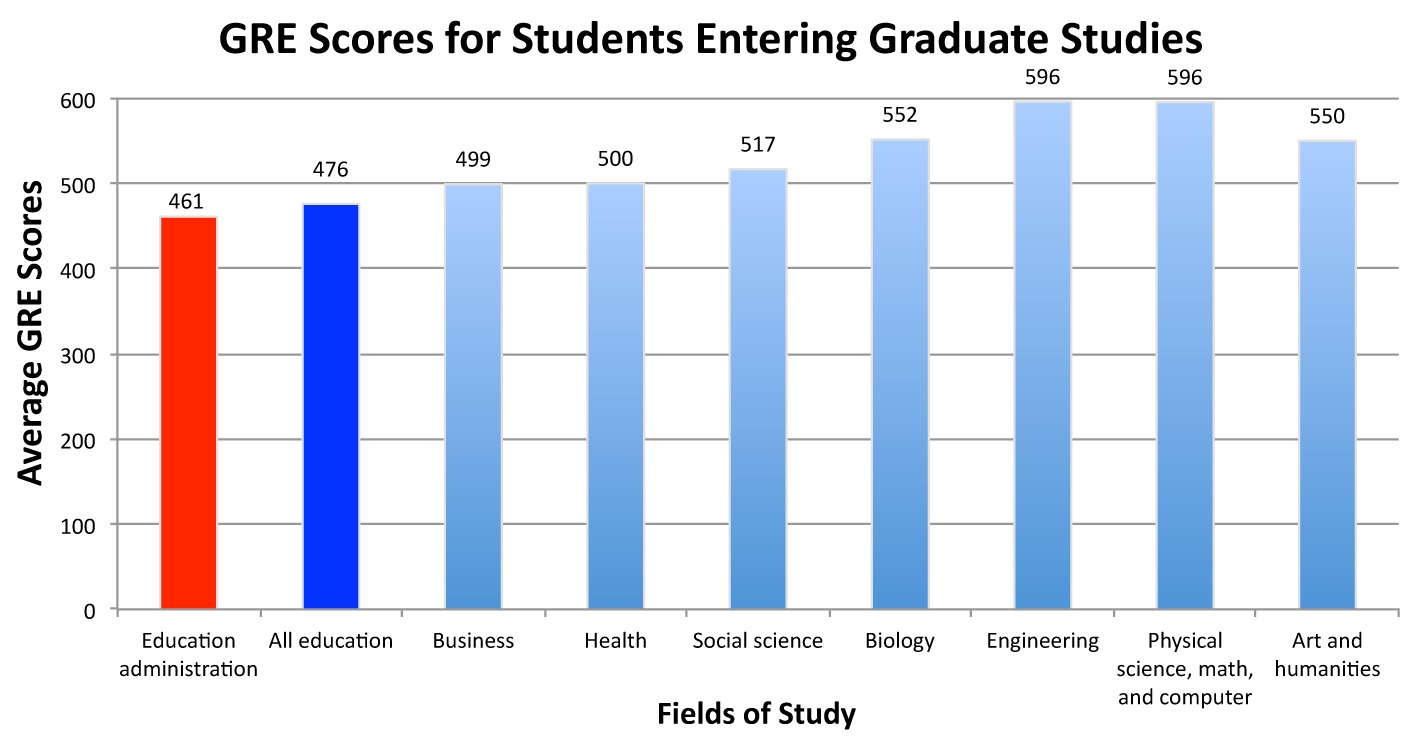How do education administration graduate candidates compare with students in other fields?
Why is this question important? When it comes to factors that influence student achievement, principals rank behind only teachers in importance (Marzano, Waters, & McNulty, 2005). Given the significant role that principals play in building an effective learning environment, it is reasonable to look at the standards for acceptance of graduate students into principal preparation programs and at how these students compare with students entering other graduate fields.
See further discussion below.

Results: The Keedy and Grandy (1999) study found that students applying to graduate school in education had lower verbal, quantitative, and analytic scores when compared with applicants in seven other fields. The study further found that students entering administration programs had lower Graduate Records Examination (GRE) scores than all other education majors.

Implications: The results of this study suggest that, on the whole, education administration program candidates did not receive adequate training in critical skills before applying to graduate school. The role of a school principal requires a complex skill set. Increasing the quality of the candidate pool for principal preparation programs may potentially increase the skill level of practicing principals and increase student achievement. In summary, better principal candidates make more effective principals.
Study Description: This Keedy and Grandy study analyzed the GRE results of individuals in education administration graduate programs between 1982 and 1996.
Definitions: Best-evidence synthesis: A method that aims to improve on current research synthesis by combining the benefits of quantitative analysis (e.g., meta-analysis) and traditional narrative reviews. Unlike a meta-analysis, best-evidence synthesis is not limited to statistical aggregation and the analysis of quantitative results; it supplements them with knowledge gained from qualitative studies.
Cooperative learning: An educational approach that targets integration of academic and social learning experiences into the lesson plan. Students work in groups to complete tasks that are presented by the teacher. This process capitalizes on the benefits students achieve from solving problems together as a group, asking one another for information, evaluating one another's ideas, and monitoring peers work.
Matching assignment: An alternative to a randomized experimental design used to create equivalent groups in which the subjects are matched based on a particular variable and then put into groups.
Quantitative research synthesis: A research method that relies on the analysis of numerical data. Quantitative techniques facilitate the comparison and generalization of research results across similar phenomena. The most common quantitative research synthesis technique is a meta-analysis. The technique allows for counting study outcomes, combining probabilities from inference tests, averaging effect sizes, and examining the variability in effect sizes across studies.
Technical approaches: Programs that integrate video and computer resources with science instruction and cooperative learning.
Citation:
* Keedy, J. L., & Grandy, J. (1999). Trends in GRE scores in education administration: Implications for principal preparation programs. Retrieved November 14, 2014 from http://files.eric.ed.gov/fulltext/ED436828.pdf.
Marzano, R. J., Waters, T., & McNulty, B. A. (2005). School leadership that works: From research to results. Alexandria, VA: Association for Supervision and Curriculum Development.
* Study from which graphed data were derived.
